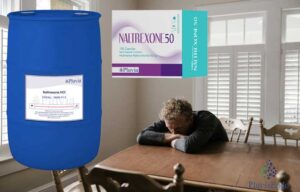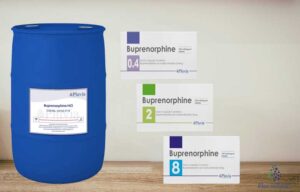The relationship between morphine and heart failure is multifaceted, involving both potential benefits and risks that require careful consideration. Heart failure is a complex and debilitating condition characterized by impaired cardiac function, fluid overload, and reduced exercise tolerance. Acute exacerbations of heart failure can cause significant distress and discomfort for patients. Also, often necessitates interventions to alleviate symptoms and improve quality of life. Morphine is a potent analgesic and sedative agent. It has long been used in the management of acute symptoms of heart failure, particularly dyspnea, and anxiety. In this article, we explore the nuanced landscape of morphine therapy in heart failure, examining its role in symptom management, hemodynamic effects, individual variability, and clinical considerations.
Symptom Management with Morphine
One of the primary indications for morphine in heart disease patients is the management of acute symptoms, particularly dyspnea. Dyspnea, or shortness of breath, is a hallmark symptom of heart failure exacerbations. It is often causing significant distress and discomfort for patients. Morphine’s potent analgesic and sedative properties can provide much-needed relief by targeting the central nervous system. In addition, it can modulate pain perception and anxiety levels.
By alleviating the subjective sensation of breathlessness, morphine can promote a sense of well-being. Also, it can improve overall comfort for patients during acute exacerbations. Additionally, morphine’s anxiolytic effects can help reduce feelings of anxiety and agitation, further contributing to symptom relief and patient comfort.
Morphine and Heart Failure: Effects of Morphine
In addition to symptom management, morphine therapy in heart failure patients can exert hemodynamic effects that influence cardiac function and performance. Morphine’s vasodilatory properties have the potential to impact cardiac preload and afterload. It has key determinants of cardiac output and myocardial oxygen demand too. By promoting venous vasodilation, morphine can reduce preload, decreasing the volume of blood returning to the heart and alleviating congestion in the pulmonary circulation.
This reduction in preload may translate into improved cardiac output and decreased myocardial oxygen demand. Particularly in cases of acute pulmonary edema where venous congestion exacerbates symptoms of heart failure. Furthermore, morphine-induced arterial vasodilation can lower systemic vascular resistance and afterload, further supporting cardiac function. Also, it can potentially improve hemodynamic stability in heart failure patients.
Morphine and Heart Failure: Risks
Despite its potential benefits, the use of morphine in heart failure patients is not without risks and considerations. One of the primary concerns associated with morphine therapy is the risk of respiratory depression. A dose-dependent effect that can compromise oxygenation and exacerbate respiratory distress. Heart failure patients, particularly those with concurrent respiratory compromise or impaired pulmonary function, may be more susceptible to the respiratory depressant effects of morphine. They necessitate cautious dosing and vigilant monitoring of respiratory status. Additionally, morphine’s potential to induce hypotension and bradycardia poses risks for hemodynamically unstable patients. In addition, it has the potential to highlight the importance of individualized treatment strategies. Furthermore, careful assessment of clinical status before initiating therapy.
Moreover, individual variability in response to morphine therapy can further complicate its use in heart patients. Also, reflects the heterogeneity of patient populations and the complex interplay of underlying pathophysiological mechanisms. Factors such as age, comorbidities, concomitant medications, and overall clinical status can influence the pharmacokinetics and pharmacodynamics of morphine, shaping the therapeutic response and risk profile for each patient. While some patients may derive significant symptom relief with minimal adverse effects, others may experience heightened sensitivity to morphine’s respiratory depressant and hemodynamic effects, necessitating personalized approaches to treatment and vigilant monitoring for adverse reactions.
Future Directions
In light of these considerations, clinicians must approach the use of morphine in heart failure patients with careful deliberation and a comprehensive understanding of the potential benefits and risks. Patient selection, dosing strategies, and monitoring protocols play pivotal roles in optimizing the safety and efficacy of morphine therapy in this population, ensuring that the benefits of symptom relief are balanced against the risks of adverse effects. Multidisciplinary collaboration among healthcare providers, including cardiologists, palliative care specialists, and pain management experts, is essential to develop individualized treatment plans that address the unique needs and preferences of each patient while minimizing potential harm.
Looking ahead, future research and clinical investigations hold promise for advancing our understanding of the role of morphine in heart failure management and refining treatment approaches to optimize patient outcomes. Novel therapeutic strategies, including alternative opioid formulations, targeted delivery methods, and combination therapies, may offer new avenues for enhancing the efficacy and safety of morphine therapy in heart failure patients. By embracing a patient-centered approach and integrating evidence-based practices with compassionate care, healthcare providers can navigate the complex terrain of morphine therapy in heart failure, striving to alleviate suffering and improve the quality of life for patients facing the challenges of this chronic condition.
Conclusion of Morphine and Heart Failure
In conclusion, the relationship between morphine and heart disease is a multifaceted interplay of potential benefits and risks that requires careful consideration and clinical judgment. Morphine therapy can provide valuable symptom relief and hemodynamic support in heart patients. Its use must be approached cautiously, with careful attention to patient selection, dosing, monitoring, and adverse effects. By integrating evidence-based practices with personalized care, healthcare providers can optimize the safety and efficacy of morphine therapy, improving outcomes and enhancing the quality of life for patients living with heart failure.









